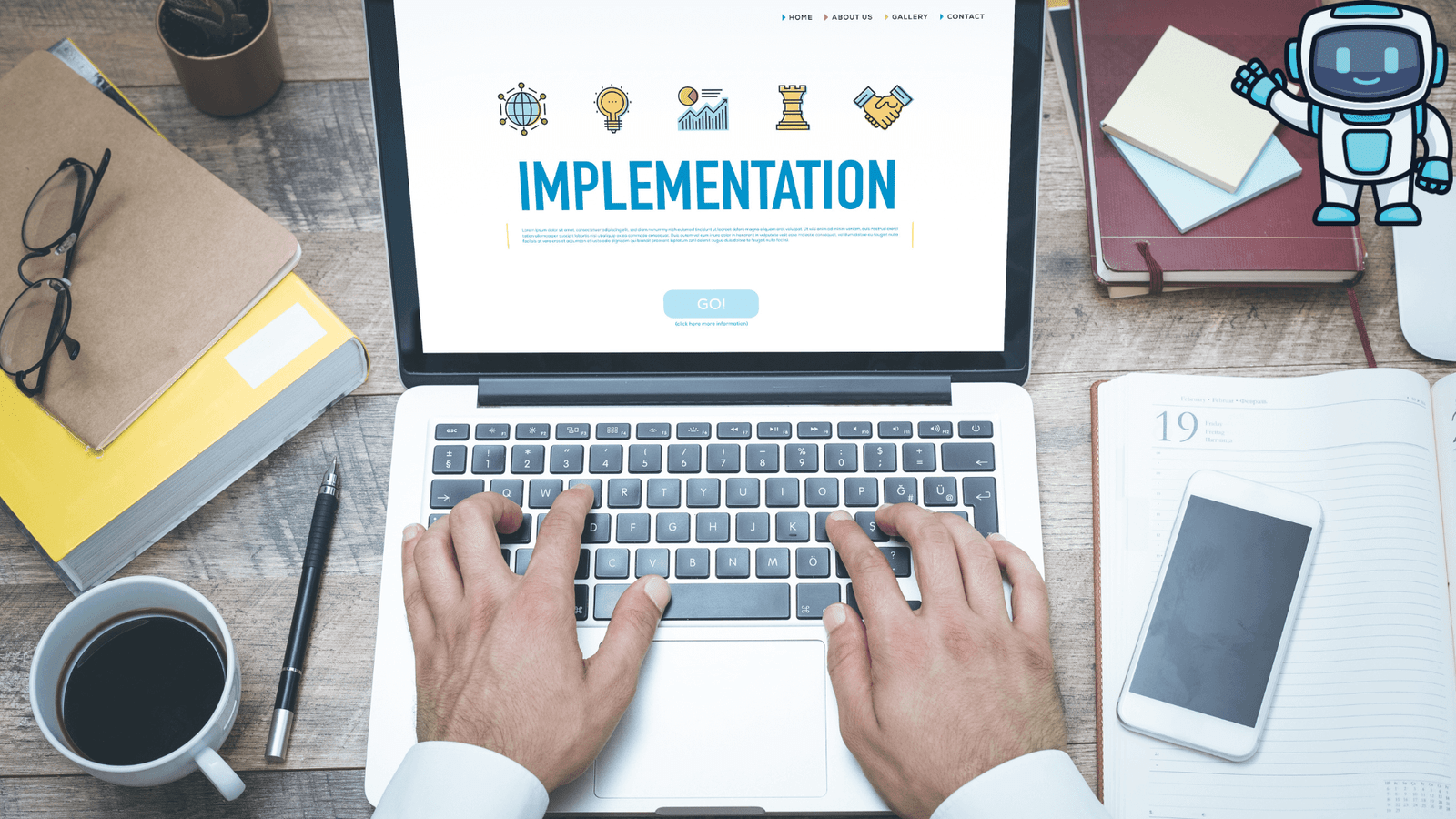Here’s a shocking truth that’s shaking up the business world: the companies leading the AI revolution aren’t the tech giants or Fortune 500 corporations you’d expect. Instead, mid-sized companies have the agility to reshape their business practices around generative AI, giving them an edge over huge corporations.
This surprising development is creating a massive competitive advantage for organizations that many overlooked. While large enterprises struggle with bureaucratic red tape and small businesses grapple with limited resources, mid-sized firms are moving at lightning speed to implement AI solutions that transform their operations.
Recent research reveals that only a quarter of mid-sized companies surveyed had adopted AI in 2023 but 51% were planning to adopt AI in 2024, showing an unprecedented acceleration in adoption rates. Even more impressive, 80% of mid-sized businesses investing in AI see operational cost reductions within their first year of implementation.
This isn’t just another business trend, it’s a fundamental shift that’s reshaping entire industries. Let’s explore why mid-sized firms are becoming the unexpected champions of AI adoption and what this means for your business strategy.
Why Mid-Sized Firms Excel at AI Implementation

Mid-sized firms occupy a unique position in the business ecosystem that makes them perfectly positioned for AI success. Unlike their larger counterparts, these organizations combine sufficient resources with remarkable agility, creating the ideal environment for AI innovation.
The Goldilocks Principle in Action
Think of mid-sized firms as the “Goldilocks” of AI adoption, they’re not too big, not too small, but just right. Large enterprises often get bogged down in complex approval processes, legacy system integration challenges, and risk-averse cultures that slow AI implementation to a crawl. Meanwhile, small businesses frequently lack the technical expertise, financial resources, or data infrastructure necessary for successful AI deployment.
Mid-sized firms, however, strike the perfect balance. They possess enough resources to invest in quality AI solutions while maintaining the flexibility to pivot quickly when opportunities arise. This combination creates a powerful competitive advantage that’s driving their rapid adoption rates.
Data-Driven Decision Making
The adopters were expecting it to improve their outlook, specifically in new products and services (43%) and marketing and sales (48%). This strategic focus on measurable outcomes demonstrates why mid-sized firms are succeeding where others struggle.
The Numbers Don’t Lie: Mid-Sized Firms Lead the Pack

The statistics surrounding AI adoption paint a clear picture of mid-sized firms’ dominance. While over 80% of businesses have embraced AI to some extent, the speed and effectiveness of implementation vary dramatically by company size.
Adoption Acceleration
The most compelling evidence comes from year-over-year growth rates. Mid-sized firms are not just adopting AI, they’re doing it faster and more effectively than their competitors. This acceleration is driven by several key factors:
- Streamlined Decision-Making: With fewer layers of management, mid-sized firms can move from AI evaluation to implementation in weeks rather than months
- Flexible Infrastructure: These companies often have newer, more adaptable technology stacks that integrate easily with AI solutions
- Cultural Agility: Mid-sized organizations typically maintain entrepreneurial cultures that embrace innovation and calculated risk-taking
Return on Investment Excellence
Perhaps most importantly, mid-sized firms are seeing superior ROI from their AI investments. 80% of mid-sized businesses investing in AI see operational cost reductions within their first year of implementation, demonstrating that their strategic approach to AI adoption is paying dividends.
How Mid-Sized Firms Outmaneuver the Competition

The success of mid-sized firms in AI adoption isn’t accidental, it’s the result of strategic advantages that larger and smaller organizations simply can’t match.
Rapid Experimentation and Iteration
Mid-sized firms excel at the “fail fast, learn faster” approach that AI implementation requires. They can launch pilot programs, gather feedback, and refine their AI strategies without the bureaucratic overhead that plagues larger organizations. This agility allows them to identify the most impactful AI applications quickly and scale successful initiatives across their operations.
Focused Implementation
Unlike large enterprises that attempt to implement AI across dozens of departments simultaneously, mid-sized firms can concentrate their efforts on high-impact areas. This focused approach leads to more successful implementations and faster time-to-value.
Employee Buy-In and Training
With smaller teams, mid-sized firms can ensure comprehensive AI training and maintain high levels of employee engagement throughout the implementation process. This human element is crucial for AI success, as even the most sophisticated technology fails without proper adoption by end users.
Industry-Specific Success Stories
Across various industries, mid-sized firms are demonstrating the power of strategic AI adoption. Let’s examine how different sectors are leveraging this advantage:
Manufacturing and Operations
More than 77% of manufacturers have implemented AI to some extent (as compared to 70% in 2023). AI in manufacturing is mostly employed in solutions for production (31%), customer service (28%), and inventory management (28%). Mid-sized manufacturers are particularly successful because they can implement AI solutions without the complexity of managing multiple legacy systems.
Professional Services
Mid-sized law firms, consulting companies, and accounting practices are revolutionizing their service delivery through AI. They’re using artificial intelligence for document review, client communication, and predictive analytics while maintaining the personal touch that clients value.
Technology and Software
New BCG research on AI adoption identifies fintech, software, and banking as the main sectors with the highest concentration of AI leaders. Mid-sized technology companies are particularly well-positioned to integrate AI into their existing products and services, creating new revenue streams and competitive advantages.
Overcoming Common AI Implementation Challenges

While mid-sized firms have natural advantages, they still face challenges in AI adoption. However, their size and structure help them overcome these obstacles more effectively than their larger or smaller counterparts.
Budget Constraints
Mid-sized firms often have more limited budgets than large enterprises, but they’re using this constraint to their advantage. By focusing on high-ROI applications and leveraging cloud-based AI solutions, they’re achieving impressive results without massive capital investments.
Talent Acquisition
Finding AI talent is challenging for all organizations, but mid-sized firms are getting creative with their solutions. They’re partnering with AI vendors, investing in employee training, and building hybrid teams that combine internal expertise with external AI specialists.
Risk Management
Mid-sized firms balance innovation with prudent risk management by implementing AI in phases, starting with low-risk applications and gradually expanding to more critical business functions. This approach minimizes potential disruptions while maximizing learning opportunities.
Frequently Asked Questions
Q: What defines a mid-sized firm in the context of AI adoption?
A: Mid-sized firms typically have between 100-5,000 employees and annual revenues between $10 million and $1 billion. These organizations have sufficient resources for AI investment while maintaining the agility for rapid implementation.
Q: Why are mid-sized firms faster at AI adoption than large enterprises?
A: Mid-sized firms benefit from streamlined decision-making processes, fewer legacy systems to integrate, and more agile organizational cultures that embrace innovation quickly.
Q: What AI applications are most successful for mid-sized firms?
A: Customer service automation, predictive analytics, process optimization, and marketing automation tend to deliver the highest ROI for mid-sized organizations.
Q: How much should mid-sized firms budget for AI implementation?
A: Most successful mid-sized firms allocate 2-5% of their annual revenue to AI initiatives, starting with pilot programs and scaling based on results.
Q: Can mid-sized firms compete with large enterprises in AI capabilities?
A: Absolutely. Mid-sized firms often achieve better AI outcomes because they can implement solutions more quickly and effectively than larger, more bureaucratic organizations.
Q: What are the biggest risks for mid-sized firms adopting AI?
A: The primary risks include insufficient planning, inadequate employee training, and attempting to implement too many AI solutions simultaneously without proper change management.
The Future Belongs to the Agile
The AI revolution is far from over, and mid-sized firms are positioning themselves to maintain their competitive advantage. “AI adoption is progressing at a rapid clip, across PwC and in clients in every sector. 2025 will bring significant advancements in quality, accuracy, capability and automation that will continue to compound on each other, accelerating toward a period of exponential growth.”
Several factors suggest that mid-sized firms will continue to lead AI adoption:
Continued Technology Democratization
AI tools are becoming more accessible and user-friendly, playing to the strengths of mid-sized organizations that prefer practical, implementable solutions over complex enterprise systems.
Increasing Competitive Pressure
As AI becomes a competitive necessity rather than a luxury, mid-sized firms’ ability to adapt quickly will become even more valuable.
Evolving Business Models
The businesses that thrive in an AI-driven economy will be those that can pivot quickly and integrate new technologies seamlessly, exactly the strengths that mid-sized firms possess.
The business world is witnessing a remarkable shift where mid-sized firms are emerging as the unexpected champions of AI adoption. Their unique combination of resources, agility, and strategic focus is creating sustainable competitive advantages that will define the next decade of business success.
This isn’t just about technology, it’s about organizational evolution. Mid-sized firms are proving that success in the AI era doesn’t require massive budgets or armies of data scientists. Instead, it demands strategic thinking, rapid execution, and the courage to embrace change.
For business leaders watching from the sidelines, the message is clear: the AI revolution is happening now, and mid-sized firms are showing the way forward. The question isn’t whether to adopt AI, it’s whether you’ll move fast enough to capitalize on the opportunities it creates.

